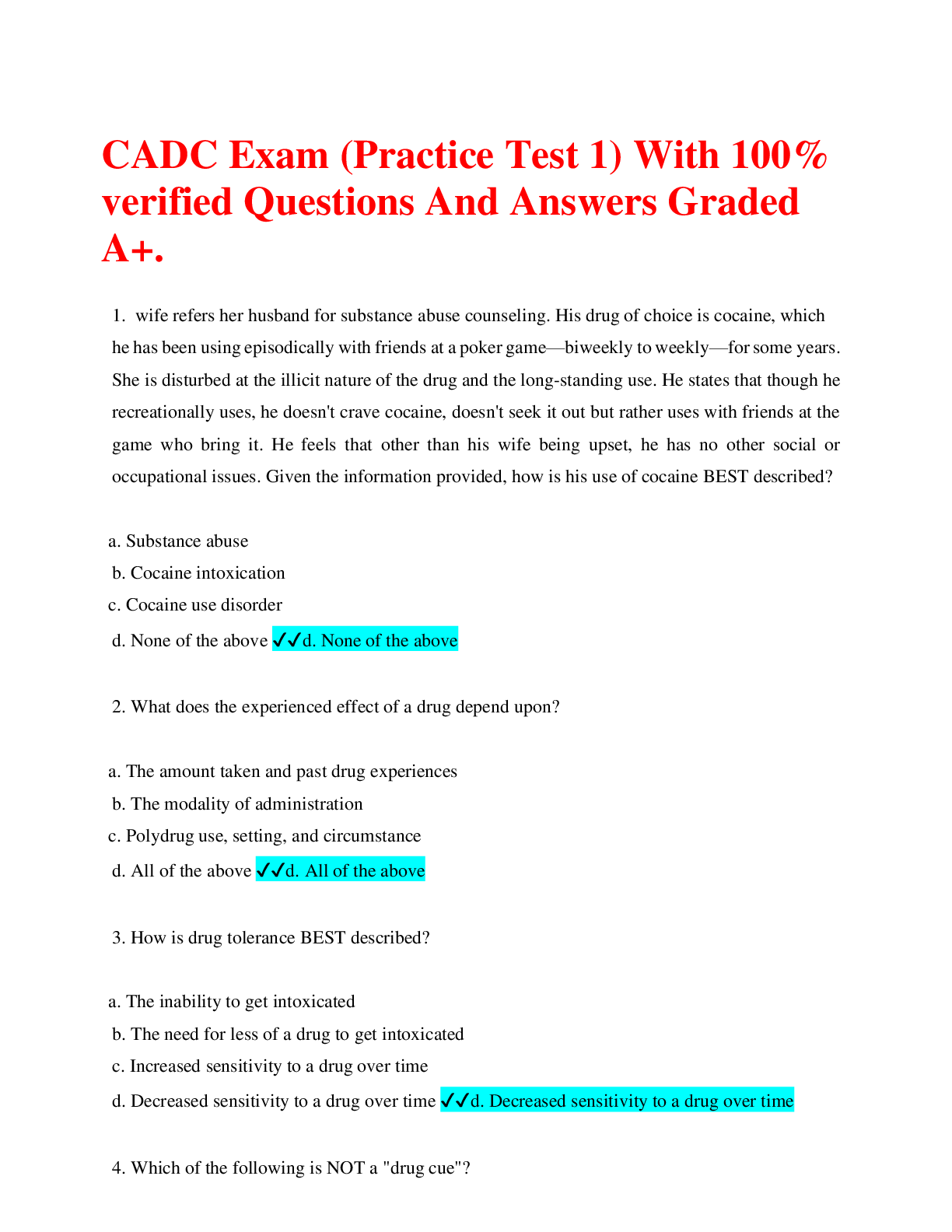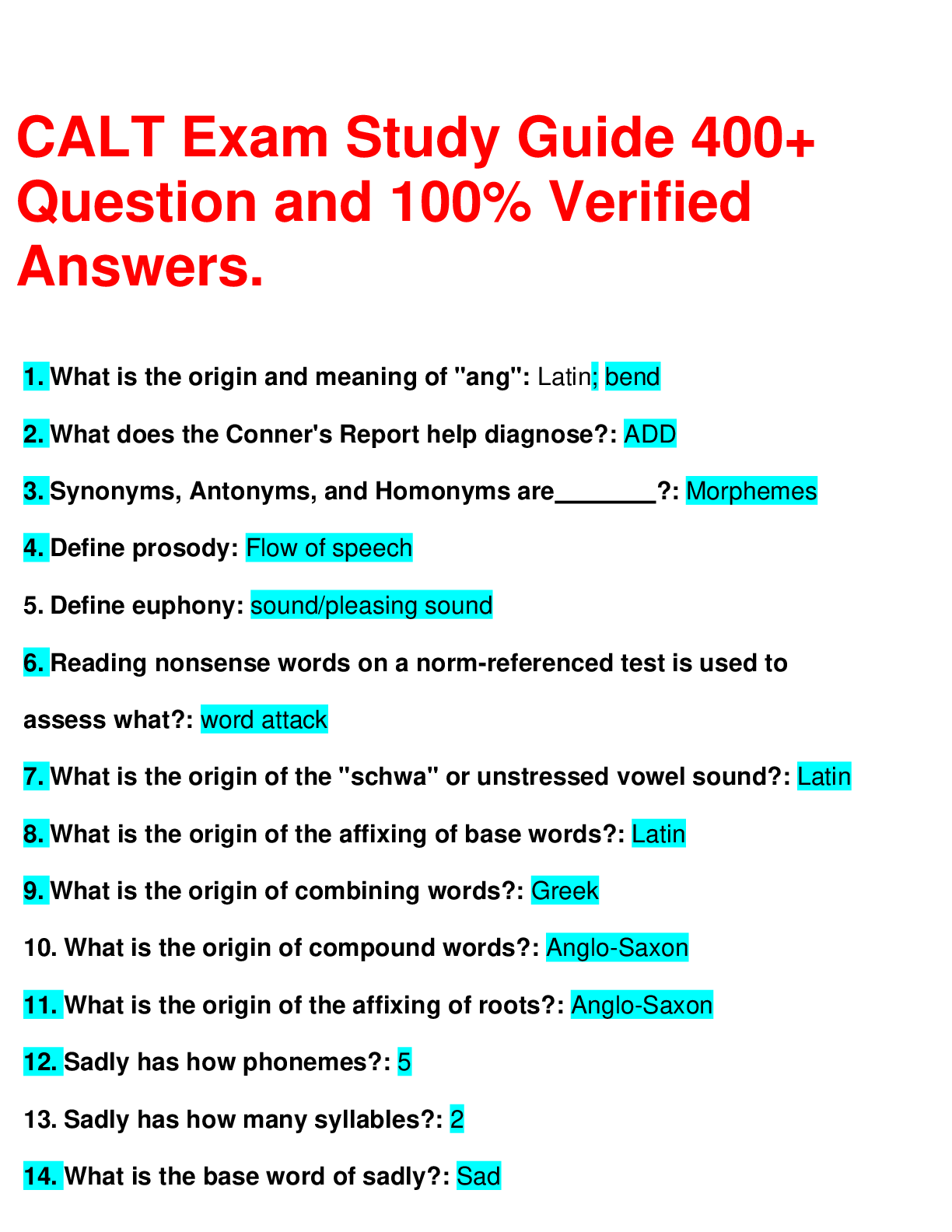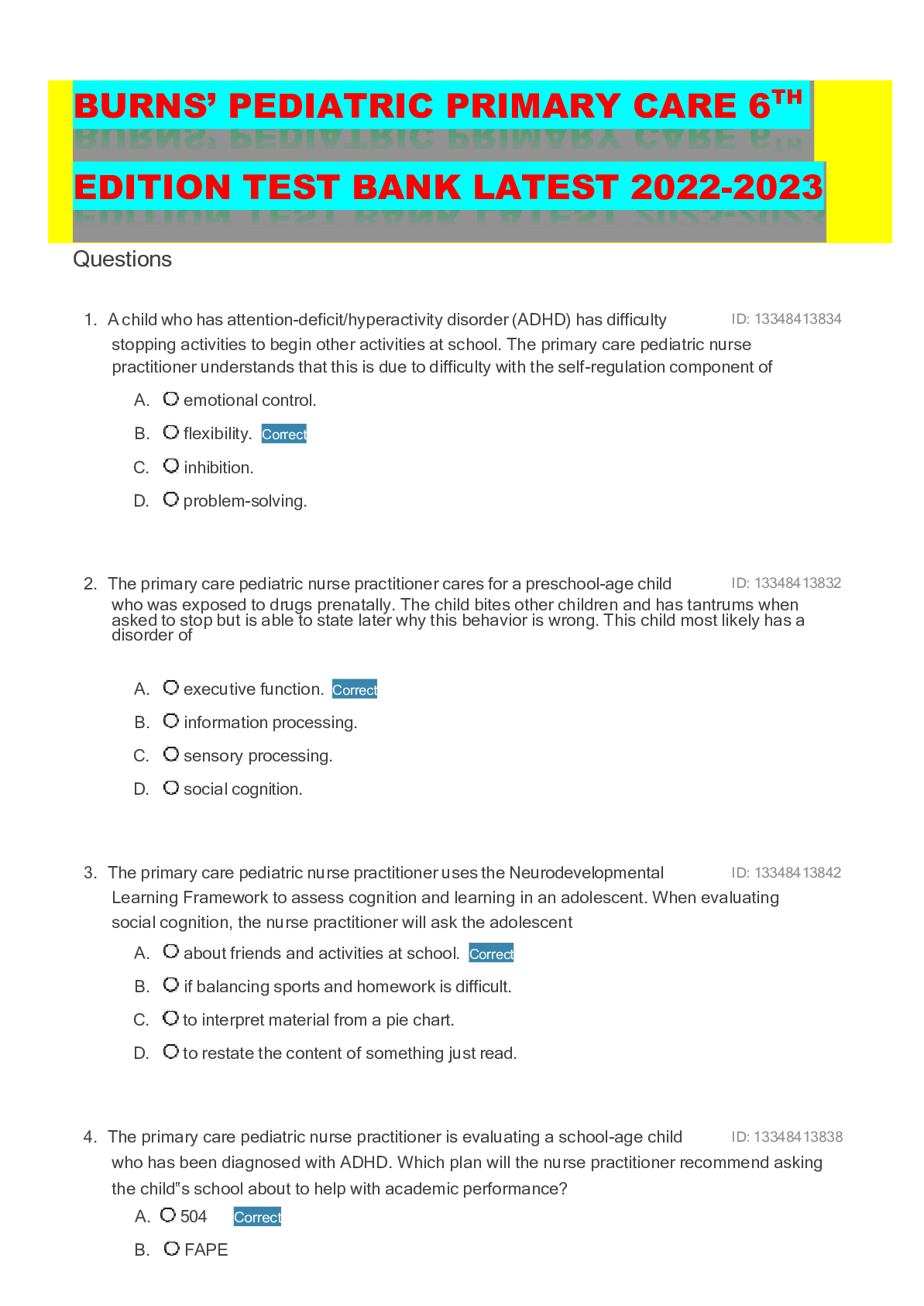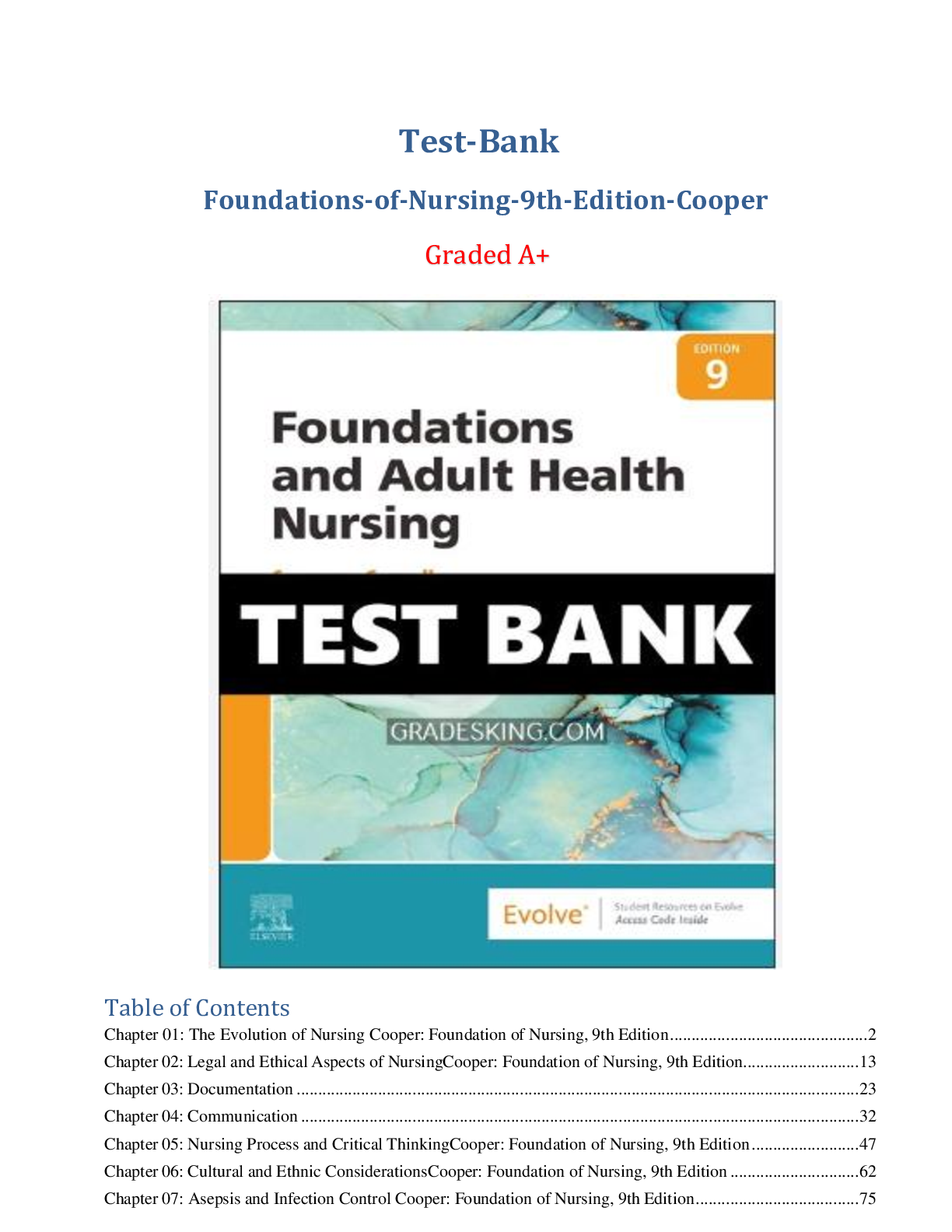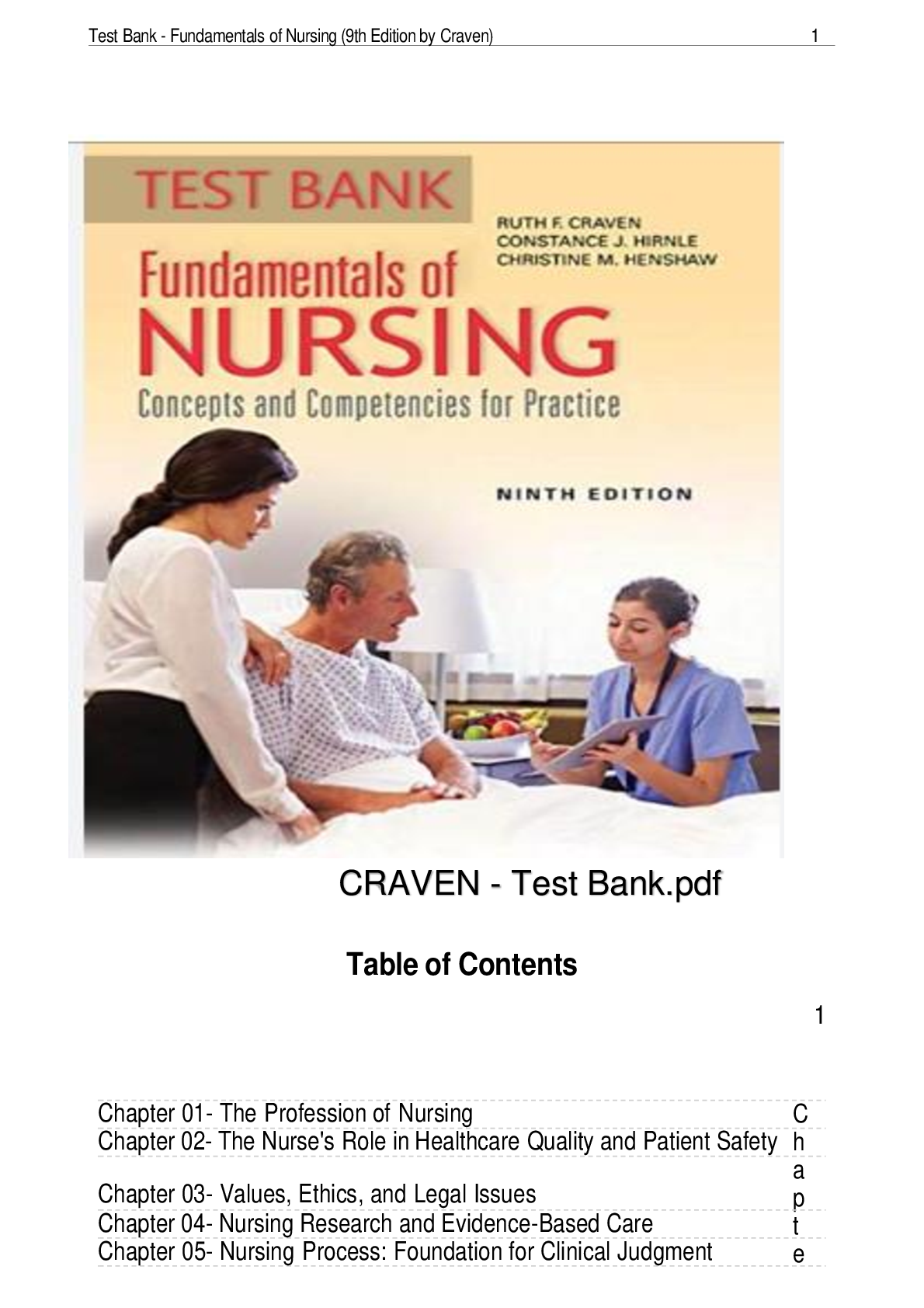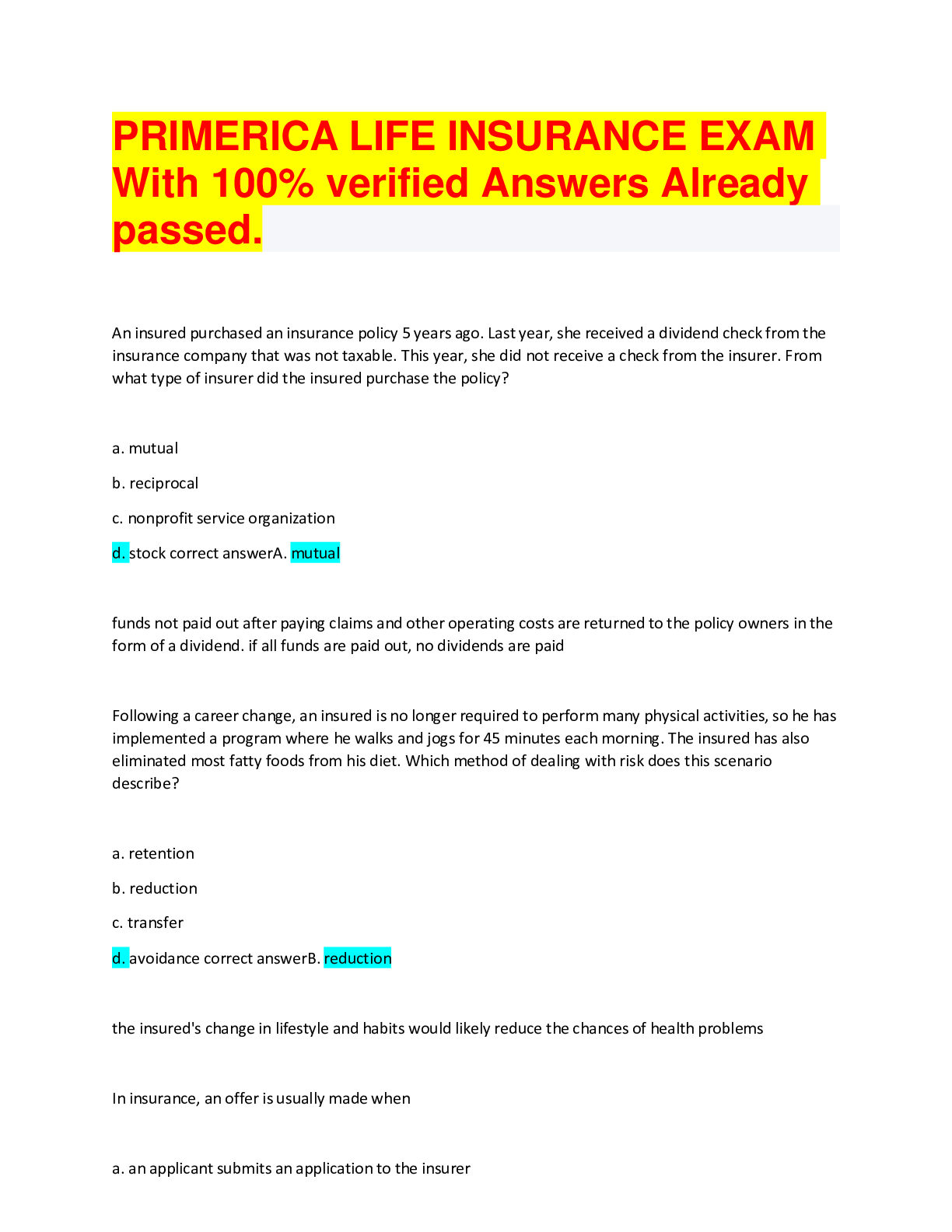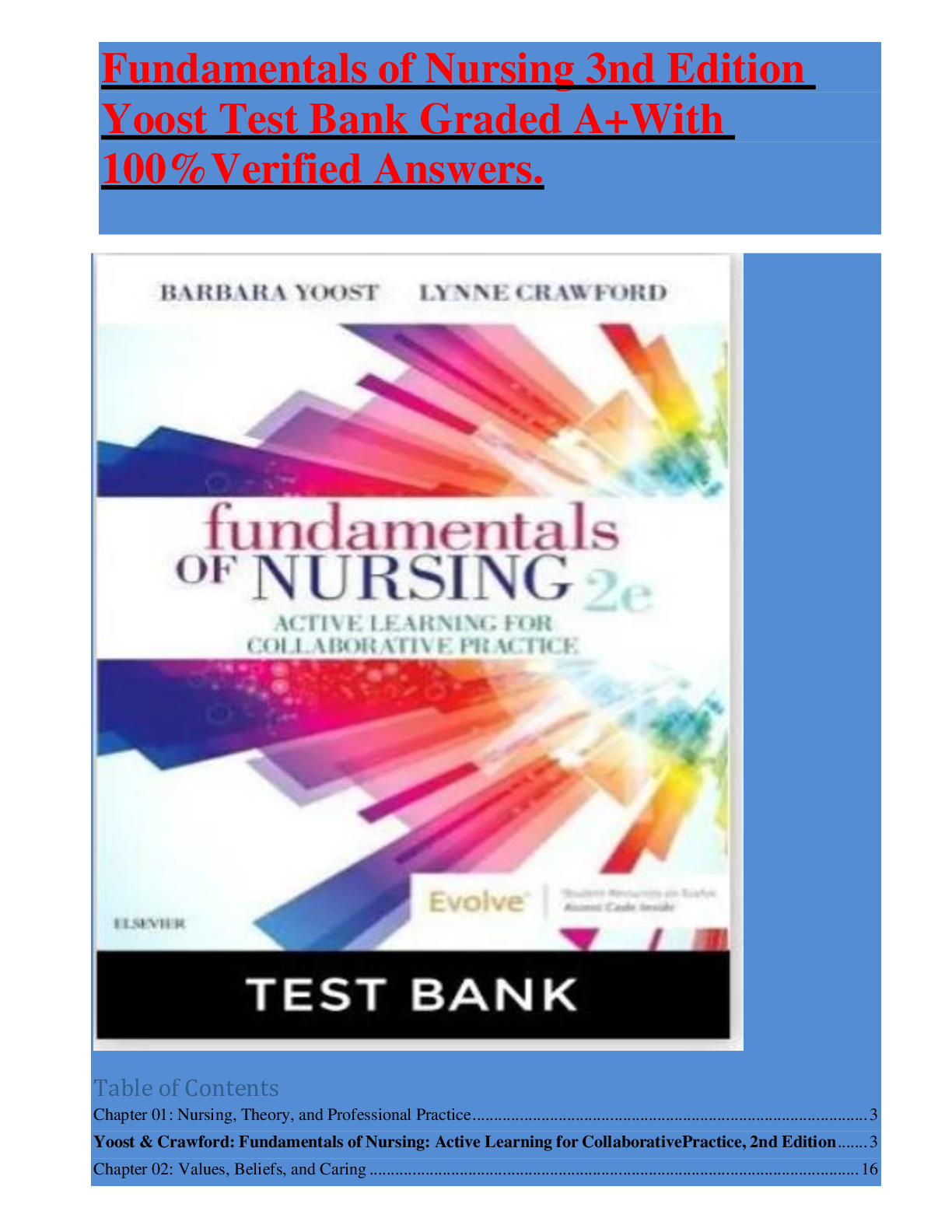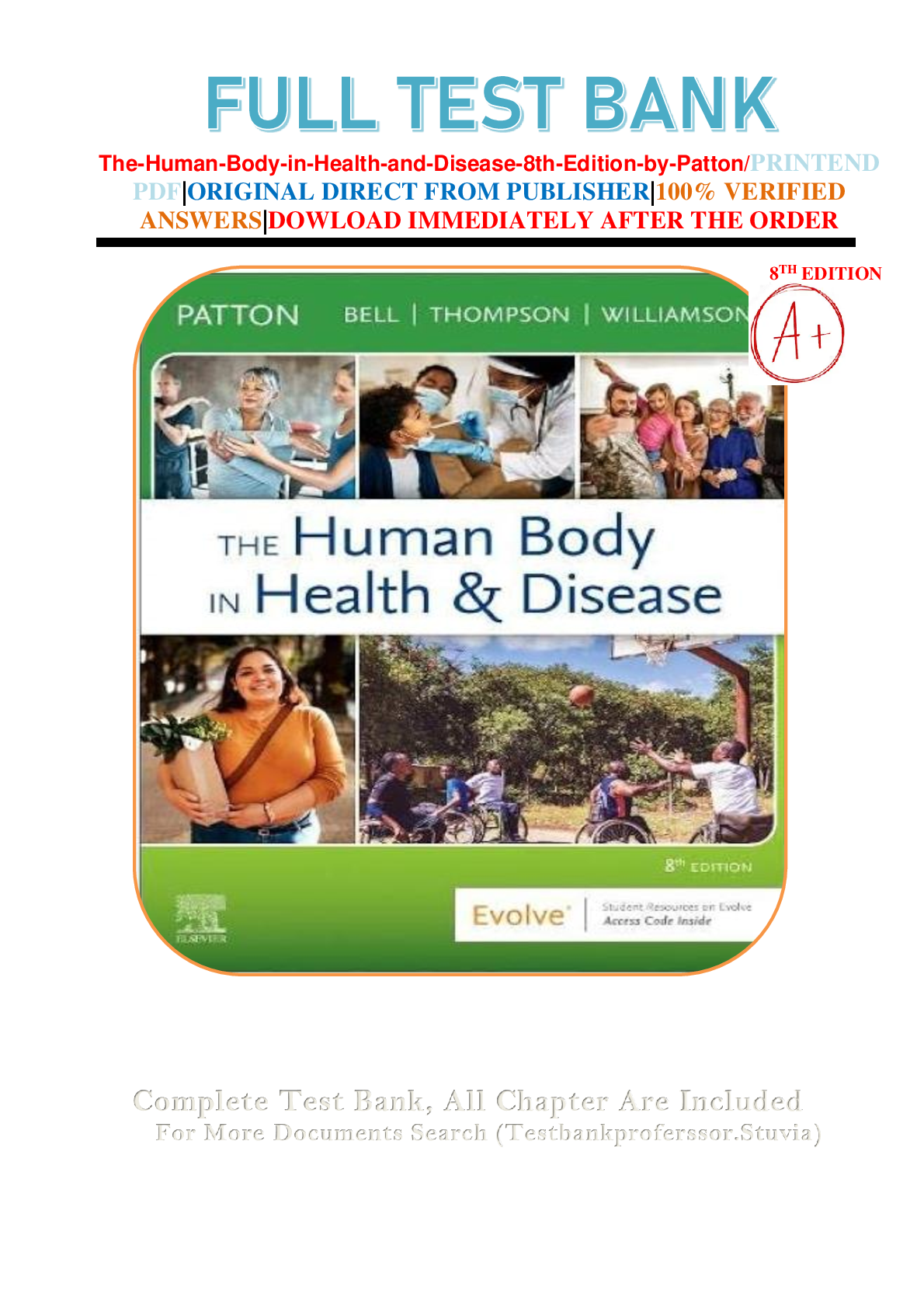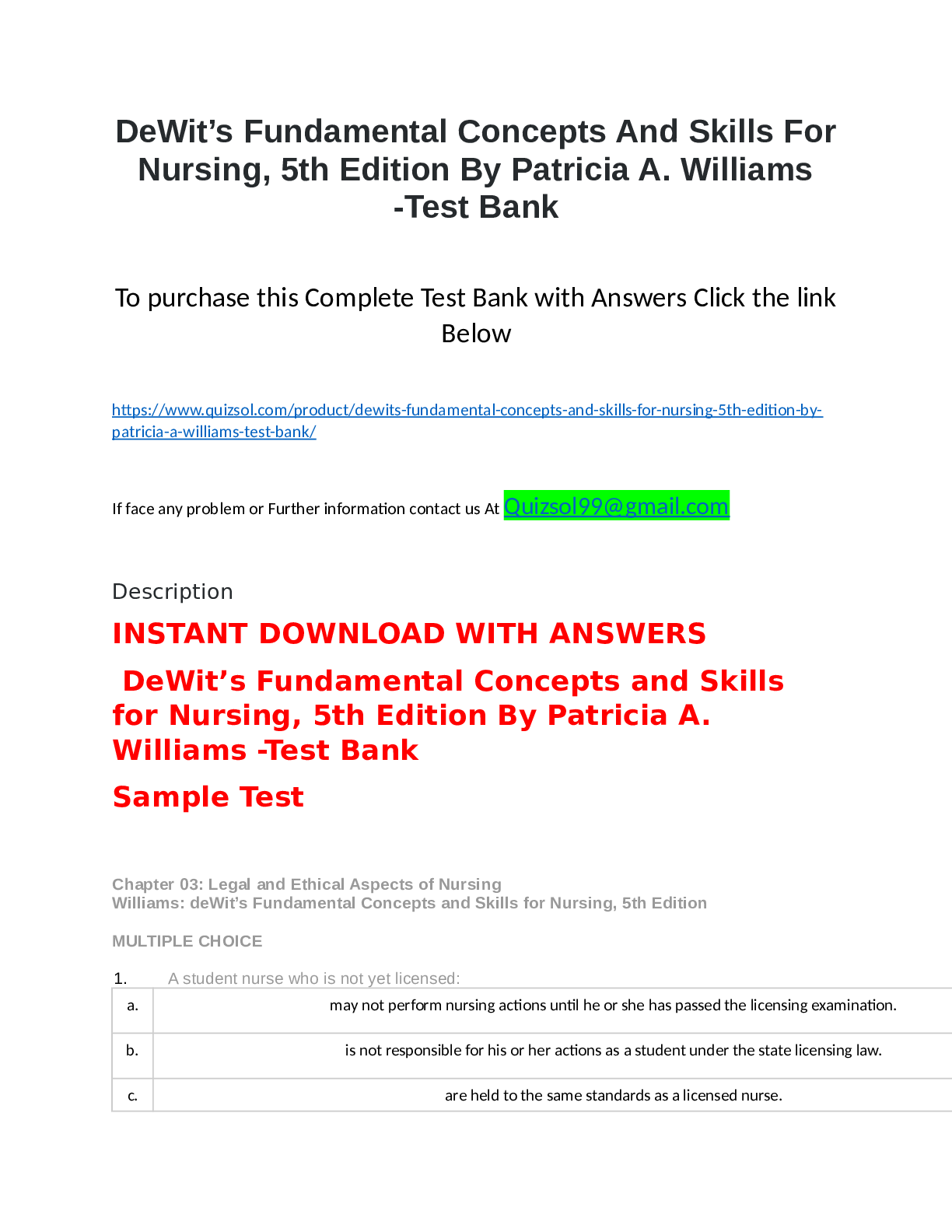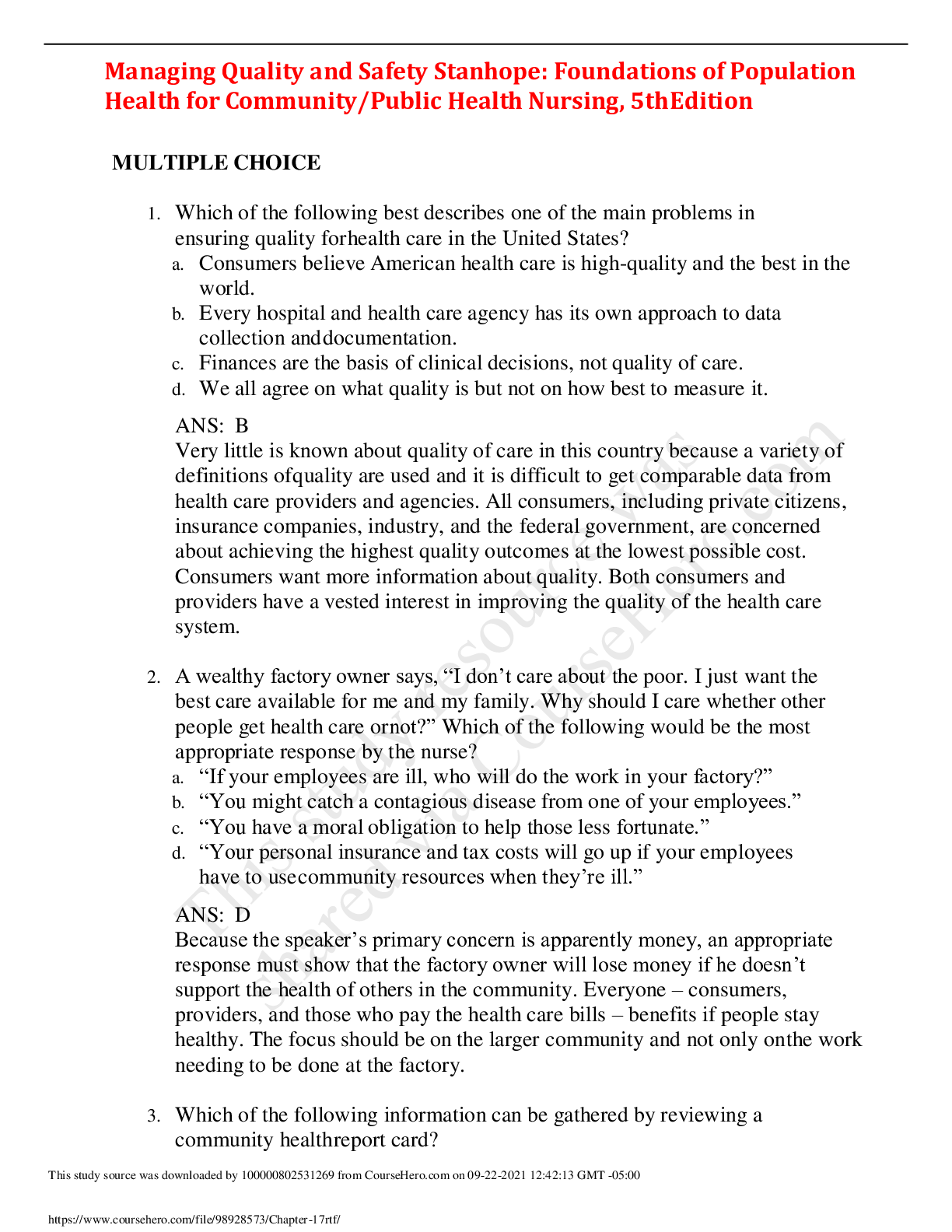McKinney: Maternal-Child Nursing, 5th Edition
Document Content and Description Below
Test Bank McKinney: Maternal-Child Nursing, 5th Edition Chapter 01: Foundations of Maternity, Women’s Health, and Child Health Nursing McKinney: Evolve Re... sources for Maternal-Child Nursing, 5th Edition MULTIPLE CHOICE 1. Which factor significantly contributed to the shift from home births to hospital births in the early 20th century? a. Puerperal sepsis was identified as a risk factor in labor and delivery. b. Forceps were developed to facilitate difficult births. c. The importance of early parental-infant contact was identified. d. Technologic developments became available to physicians. ANS: D Technologic developments were available to physicians, not lay midwives. So in-hospital births increased in order to take advantage of these advancements. Puerperal sepsis has been a known problem for generations. In the late 19th century, Semmelweis discovered how it could be prevented with improved hygienic practices. The development of forceps is an example of a technology advance made in the early 20th century but is not the only reason birthplaces moved. Unlike home births, early hospital births hindered bonding between parents and their infants. PTS: 1 DIF: Cognitive Level: Knowledge/Remembering REF: p. 1 OBJ: Integrated Process: Teaching-Learning MSC: Client Needs: Safe and Effective Care Environment 2. Family-centered maternity care developed in response to a. demands by physicians for family involvement in childbirth. b. the Sheppard-Towner Act of 1921. c. parental requests that infants be allowed to remain with them rather than in a nursery. d. changes in pharmacologic management of labor. ANS: C As research began to identify the benefits of early extended parent-infant contact, parents began to insist that the infant remain with them. This gradually developed into the practice of rooming-in and finally to family-centered maternity care. Family-centered care was a request by parents, not physicians. The Sheppard-Towner Act of 1921 provided funds for state-managed programs for mothers and children. The changes in pharmacologic management of labor were not a factor in family-centered maternity care. PTS: 1 DIF: Cognitive Level: Knowledge/Remembering REF: p. 2 OBJ: Integrated Process: Teaching-Learning MSC: Client Needs: Psychosocial [Show More]
Last updated: 7 months ago
Preview 1 out of 610 pages
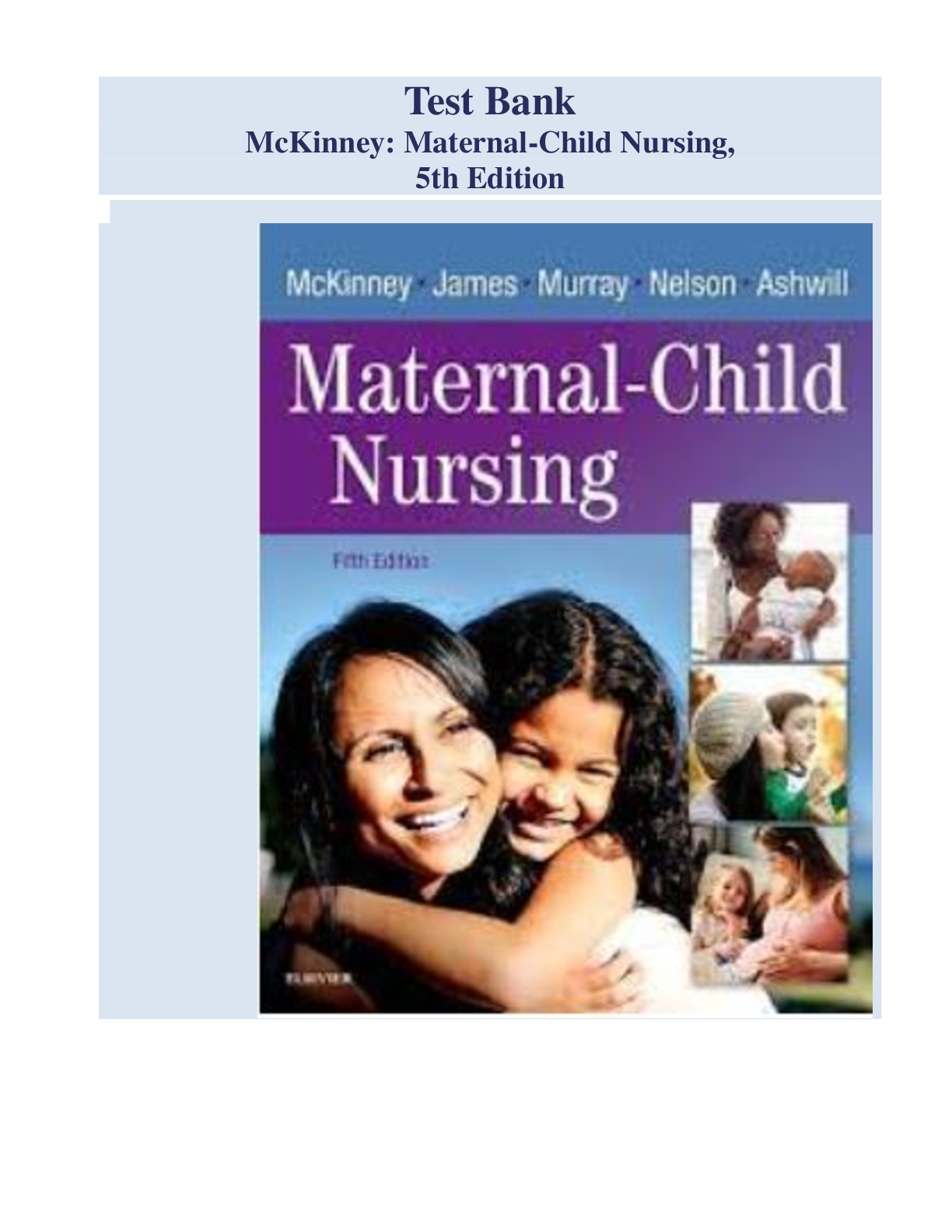
Reviews( 0 )
Document information
Connected school, study & course
About the document
Uploaded On
Sep 22, 2023
Number of pages
610
Written in
Additional information
This document has been written for:
Uploaded
Sep 22, 2023
Downloads
0
Views
82

